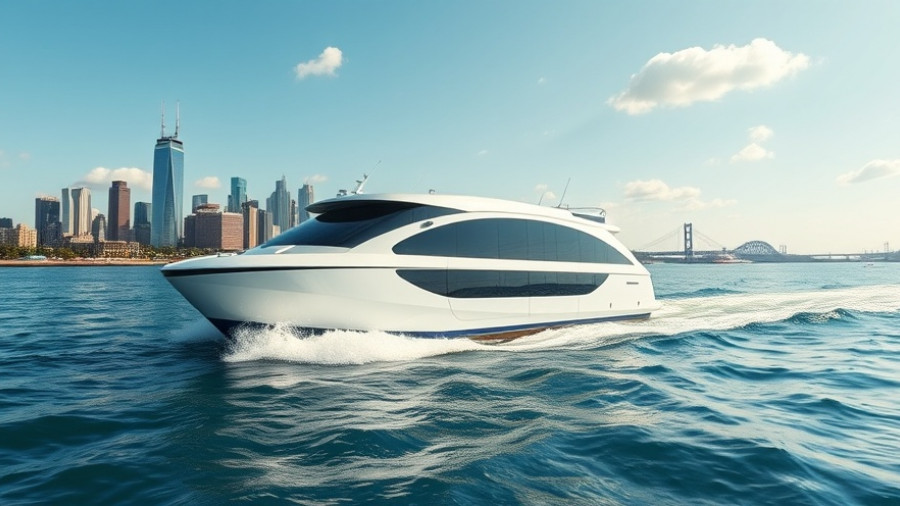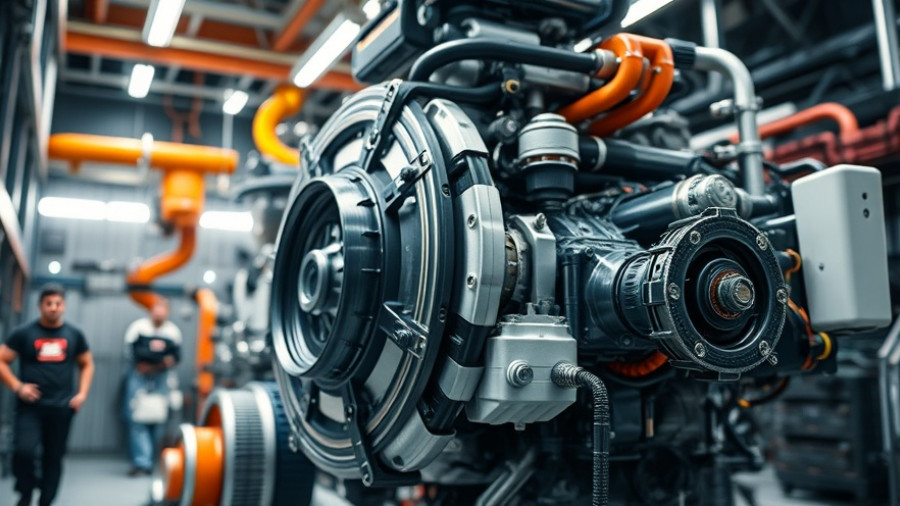
Port of LA's Ambitious Pier 500 Project: A Leap Towards Future Glories
In an era where global supply chains face unprecedented demands, the Port of Los Angeles is taking a significant step to enhance its functionality and efficiency. On October 2, 2025, the port announced its search for proposals from interested parties to assist in the pre-development of a new container terminal at Pier 500. This initiative aims to facilitate the successful integration of larger, next-generation cargo ships into the port's operations, ushering in a new era of maritime transport.
Understanding the Necessity: Why Pier 500?
The Port of Los Angeles is one of the busiest trade gateways in the United States, experiencing increased cargo traffic due to booming international trade. According to various studies, cargo volume is expected to rise, stressing the need for modernized facilities that can manage the growing influx of goods. Executive director Gene Seroka emphasized that this is a unique opportunity: "For the first time in a generation, the Port of Los Angeles plans to build a new container terminal to meet global supply chain demand for decades into the future." Within this framework, Pier 500, spanning 200 acres with two new berths and approximately 3,000 linear feet of wharf space, is set to increase cargo handling efficiency exponentially.
Transforming the Port: Economic Opportunities and Job Creation
The development of the Pier 500 terminal is expected to spawn numerous economic opportunities, particularly in job creation. The port envisions harnessing its ability to develop the cleanest terminal possible, which would not only enhance operational efficiency but also contribute to sustainability efforts. Job opportunities are anticipated to arise during construction and afterward in terminal operations, providing a significant boost to local communities. The economic ripple effect could enhance various sectors, notably construction, logistics, and even local services that cater to a budding workforce.
Future-Forward: Meeting the Needs of Tomorrow's Cargo
The next-generation container ships are specifically designed to offer greater capacity and improved fuel efficiency, making them a crucial element in sustainable shipping solutions. As details emerge about Pier 500's capabilities, it's clear that the Port of Los Angeles is positioning itself as a proactive player in adapting to future demands. By employing advanced terminal technology and green practices, the project aims to lessen environmental impacts while navigating the challenges modern supply chains face.
Regulatory Compliance and Long-Term Vision
As part of the pre-development process, all necessary assessments will be conducted under California Environmental Quality Act (CEQA) and the National Environmental Policy Act (NEPA). These regulations ensure that environmental impacts are thoroughly evaluated, reflecting the port’s commitment to responsible development.
Long-term operational success hinges on ensuring that all proposed developments are not only economically feasible but also environmentally sustainable. Gene Seroka's vision emphasizes that maintaining regular, open communications with stakeholders—including local businesses, community groups, and environmental agencies—will be vital as the project unfolds.
A Landmark Initiative: The Path Ahead
The Port of Los Angeles aims to finalize a public-private partnership to spearhead this project. Expectations are that the entire process—from pre-development to operational readiness—could span roughly a decade. As we look forward, the Pier 500 terminal stands as a testament to a revived commitment to efficient, sustainable international trade practices, and an ambitious roadmap that aims to carry the Port of Los Angeles forward into this new chapter of port operations.
As this project seeks proposals, the call for participation highlights a unique opportunity for various stakeholders to become part of something transformative for not just the port, but for the future of global shipping.
 Add Row
Add Row  Add
Add 




Write A Comment